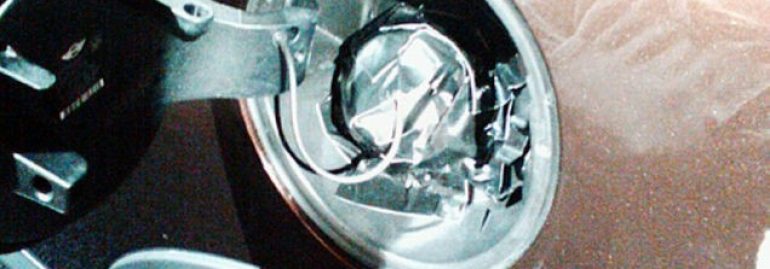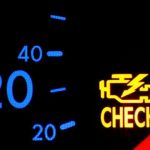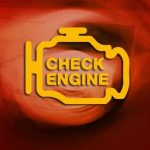Welcome to a comprehensive exploration of the power behind On-Board Diagnostic II (OBD II) systems. In this fact sheet, we will delve into the intricacies of OBD II – an advanced automotive technology that has revolutionized vehicle diagnostics and troubleshooting.
From its inception to widespread adoption, OBD II has brought about immense benefits for both vehicle owners and technicians alike. Join us as we unveil the fascinating capabilities of OBD II, shedding light on its history, functionality, and significance in our modern-day automotive landscape. Get ready to be captivated by the extraordinary world of OBD II systems!
The Origins of OBD II: A Brief History
- In 1988, the California Air Resources Board (CARB) implemented the first version of On-Board Diagnostic (OBD) systems as a way to monitor vehicle emissions and ensure compliance with environmental regulations.
- OBD I systems were relatively basic, focusing primarily on detecting malfunctions in engine components. However, they lacked standardized diagnostic trouble codes (DTCs), making it difficult for mechanics to pinpoint specific issues.
- Recognizing the need for a more robust and comprehensive system, CARB introduced OBD II in 1996. This updated version provided uniform DTCs and required all vehicles sold in California to be equipped with an OBD II port. Eventually, other states followed suit, leading to national implementation by 1999.
Benefits of OBD II Systems
Besides addressing some of the limitations of its predecessor, there are several key benefits that have made OBD II systems integral to modern vehicle maintenance:
- Emissions Monitoring: By continuously monitoring exhaust gases through sensors located throughout the engine and exhaust system, OBD II systems can quickly detect any emission-related failures or malfunctions.
- Enhanced Diagnostics: With its standardized DTC library and improved ability to pinpoint issues within various subsystems such as fuel injection or ignition systems, mechanics can now diagnose problems accurately and efficiently.
- Faster Repairs: Armed with information from an OBD scanner connected to a vehicle’s onboard computer via the OBD port under the dashboard; technicians can swiftly identify problems without relying on time-consuming manual troubleshooting methods.
How OBD II Works: Understanding the Inner Mechanisms
OBD II systems monitor various aspects of a vehicle’s performance using sensors and diagnostic equipment. These systems constantly collect data from different components, such as the engine, transmission, and emissions control system.
Once collected, this data is processed by the on-board computer, which compares it to predetermined thresholds and values. If any issues or malfunctions are detected, an error code is generated by the computer.
Drivers can access these error codes through a diagnostic tool that connects to the vehicle’s OBD II port. This allows them to identify the specific problem affecting their vehicle. Mechanics also rely on OBD II systems during repairs and maintenance work, as they provide valuable insights into potential problems that may not be immediately apparent.
By understanding how OBD II works, drivers and mechanics can effectively diagnose and address issues with their vehicles in a timely manner. The ability to easily access diagnostic information has revolutionized automotive repair processes and made it more efficient than ever before.
OBD II Protocols: Exploring Communication Standards
- The OBD II system utilizes various communication protocols to exchange information between the vehicle’s onboard computer and external devices.
- These protocols standardize the way data is communicated, allowing technicians and diagnostic tools to access and interpret it effectively.
The most commonly used OBD II communication protocols are:
- PWM (Pulse Width Modulation) – Used in older vehicles, this protocol communicates data by varying the width of electrical pulses sent over a single wire.
- VPW (Variable Pulse Width) – Similar to PWM, VPW also uses varying pulse widths but employs two wires instead.
- ISO 9141-2 – A serial communication protocol initially developed for Asian vehicles, ISO 9141-2 operates using a K-Line physical layer that enables bi-directional communication between the vehicle ECM and external devices such as scanners or readers.
- CAN (Controller Area Network) – Currently widespread in modern cars, CAN is a high-speed serial bus system transmitting data across multiple modules within the vehicle network.
These protocols ensure compatibility across different makes and models of vehicles, simplifying diagnostics for technicians while promoting interoperability among diagnostic tools and scanning devices on the market.
Diagnostic Trouble Codes (DTCs): Decoding the Language of OBD II
What are Diagnostic Trouble Codes (DTCs)?
Diagnostic Trouble Codes, or DTCs, are codes generated by On-Board Diagnostic II (OBD II) systems to identify potential issues within a vehicle. These codes serve as a communication tool between the vehicle’s onboard computer system and automotive technicians.
Understanding DTC Structure:
DTCs consist of five characters, with each character conveying specific information about the problem detected. The first character indicates which system in the vehicle is affected, such as the engine or transmission. The second character provides more detailed information on the component that has triggered the code. The third digit specifies whether it is a generic code that applies to all vehicles or if it is manufacturer-specific. Lastly, characters four and five give additional details about the fault.
Key points:
- DTCs are used by OBD II systems to identify vehicle issues.
- DTC structure includes five characters.
- Each character provides specific information about different aspects of the fault detected.
- Different digits indicate system affected, component details, code type, and additional fault specifics.
OBD II Scan Tools: Essential Equipment for Diagnostics
OBD II scan tools are vital devices for diagnosing and troubleshooting automotive issues. These tools connect to the on-board diagnostic (OBD) system of vehicles, allowing mechanics and car owners to retrieve valuable information about the vehicle’s performance.
- OBD II scan tools provide real-time data: These devices can access information from various sensors in the vehicle, such as engine speed, coolant temperature, and oxygen levels. This real-time data helps identify any issues or malfunctions that may be affecting the vehicle’s performance.
- Easy access to trouble codes: When a problem occurs in a vehicle, it triggers a trouble code that is stored in the OBD system. By using an OBD II scan tool, mechanics can retrieve these trouble codes quickly and accurately. This enables them to pinpoint the exact issue and provides a starting point for repairs.
- Save time and money on diagnostics: With an OBD II scan tool, mechanics don’t have to rely solely on their intuition or physical inspections to identify problems. This efficient diagnostic process saves both time and money by eliminating unnecessary labor hours spent searching for issues manually.
OBD II scan tools are indispensable resources for anyone involved in automotive maintenance or repairs. They simplify diagnostics by providing immediate access to essential data and trouble codes while saving time and financial resources during repair processes.
OBD II Readiness Monitors: Monitoring Emission Control Systems
- One of the key functions of On-Board Diagnostic II (OBD II) systems is to monitor the emission control systems in vehicles.
- OBD II readiness monitors constantly analyze various components, such as catalytic converters and oxygen sensors, to ensure they are operating efficiently.
- These monitors perform regular checks during vehicle operation and store diagnostic trouble codes (DTCs) when issues are detected.
How OBD II Readiness Monitors Work
- OBD II readiness monitors use a set of predetermined criteria known as “Readiness Flags” to determine if the emission control systems have been tested successfully.
- Each flag corresponds to a specific system or component. For example, there may be flags for catalyst efficiency, fuel system accuracy, or oxygen sensor functionality.
- When all necessary tests have been completed without any issues, the corresponding flags are considered “ready.”
Importance of OBD II Readiness Monitors
By monitoring emission control systems and ensuring their proper functioning through readiness monitors, OBD II systems help maintain higher air quality standards by reducing harmful pollutants released into the environment. Additionally, these monitors enable technicians to quickly identify problems with emissions-related components, making it easier and more efficient to diagnose and repair faulty parts.
OBD II Data Parameters: Unveiling the Wealth of Information
- Engine RPM: This parameter displays the revolutions per minute (RPM) of your vehicle’s engine. It indicates how fast the engine is spinning and can help diagnose issues related to engine performance.
- Vehicle Speed Sensor (VSS): The VSS parameter reveals the current speed at which your vehicle is traveling. It provides a real-time display of your speed, allowing you to monitor changes or detect any inconsistencies.
- Fuel Trim: Fuel trim refers to the adjustment made by your vehicle’s engine control module (ECM) to maintain an optimal air-fuel mixture for combustion. Monitoring fuel trim parameters can give insights into possible problems with sensors, fuel injectors, or vacuum leaks.
By utilizing these OBD II data parameters, drivers and technicians gain access to essential information about their vehicle’s performance and potential issues. Understanding these parameters allows for quick identification and resolution of problems before they become more severe.
With engine RPM, VSS, and fuel trim data readily available through OBD II systems, maintenance becomes more efficient and proactive measures can be taken promptly for better overall car care. Undoubtedly, this wealth of information puts users in a superior position when it comes to monitoring their vehicles’ health on an ongoing basis without relying on limited reactive maintenance approaches
OBD II and Emissions Testing: Ensuring Environmental Compliance
- OBD II systems play a crucial role in ensuring environmental compliance by monitoring the emissions levels of vehicles.
- These systems continuously assess various vehicle parameters and detect any malfunctions that could lead to increased emissions.
- When an emission-related issue is detected, the OBD II system triggers a warning light on the dashboard, alerting the driver to take corrective action.
The Importance of OBD II in Emission Control Programs
- By providing real-time data on vehicle emissions, OBD II helps governments enforce emission control programs effectively.
- It enables authorities to identify non-compliant vehicles quickly, leading to improved air quality and reduced pollution levels.
- Moreover, as part of periodic inspections or smog checks, OBD II diagnostics are used alongside tailpipe emission testing to ensure comprehensive compliance.
OBD II and Vehicle Maintenance: Streamlining Repairs and Servicing
- OBD II systems provide a streamlined approach to vehicle maintenance by alerting drivers and mechanics to potential issues with the vehicle’s performance.
- These systems use sensors placed throughout the vehicle to monitor key components, such as the engine, transmission, and exhaust system.
- When a problem is detected, an error code is generated, which can be accessed through a diagnostic tool.
- This simplifies the repair process by quickly pinpointing the source of the issue.
- Mechanics are then able to diagnose and fix problems more efficiently, saving time for both themselves and their customers.
The Advantages of OBD II Systems for Vehicle Owners
- Cost savings: With detailed error codes provided by OBD II systems, vehicle owners can better understand their car’s issues before taking it in for repairs. This helps them avoid unnecessary repairs or overcharging from unscrupulous mechanics.
- Timely detection of problems: By regularly checking error codes using an OBD II scanner or app, drivers can stay ahead of potential issues before they worsen. Catching minor problems early on prevents further damage that could lead to costly repairs down the line.
- Emission control compliance: Many countries require regular emissions testing for vehicles. OBD II systems make it easy to detect emission-related faults in real-time, ensuring vehicles meet environmental regulations without hassle.
- DIY-friendly troubleshooting: Armed with basic knowledge about interpreting error codes retrieved from their cars’ OBD II systems, some car owners may choose to handle certain repairs themselves rather than relying solely on professional mechanics.
Overall, OBD-II technology presents numerous benefits when it comes to maintaining vehicles effectively while minimizing costs and inconvenience associated with traditional repair methods
OBD II and Future Advancements: Innovations on the Horizon
OBD II and Future Advancements
- The potential of OBD II: On-Board Diagnostic II (OBD II) systems have revolutionized vehicle maintenance and diagnostics. With the ability to monitor a wide range of engine parameters, these systems provide valuable insights into a car’s performance and health. But the true power of OBD II lies in its potential for future advancements.
- Predictive Maintenance: One exciting development on the horizon is predictive maintenance. Using advanced algorithms, OBD II could analyze data from sensors in real-time to predict potential issues before they occur. This proactive approach would not only save time and money but also prevent costly breakdowns on the road.
- Enhanced Connectivity: Another area for advancement is enhanced connectivity. As cars become more connected through IoT technology, OBD II systems could seamlessly communicate with other onboard devices, such as navigation systems or smartphone apps. This would enable features like live traffic updates, remote diagnosis, and even personalized driving analytics to enhance the overall driving experience.
Overall, while current OBD II systems are already impressive in their capabilities, future advancements hold even greater promise for improving vehicle maintenance and enhancing driver satisfaction. Both predictive maintenance and enhanced connectivity have the potential to transform how we interact with our vehicles and ensure optimal performance on the road.






